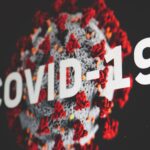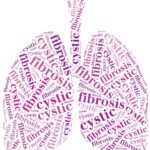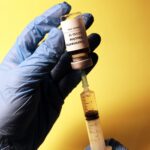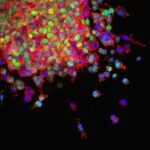 We present a rare case of severe mixed drug overdose as a suicide attempt in a polymorbid COVID-19 reconvalescent patient manifested with metformin-associated lactic acidosis (MALA), complicated with shock, acute kidney injury and episodes of hypoglycemia. We used a complex decontamination – detoxication approach with extracorporeal detoxication and ICU treatment with favorable outcome, complete resolution of the symptoms and full recovery within 36 hours. This case is unusual in the common clinical practice because of the association of two rare clinical syndromes – metformin-induced lactic acidosis (MILA) and MALA – and the criteria that have been applied for early aggressive invasive therapy in such patients. Read the full article here.
We present a rare case of severe mixed drug overdose as a suicide attempt in a polymorbid COVID-19 reconvalescent patient manifested with metformin-associated lactic acidosis (MALA), complicated with shock, acute kidney injury and episodes of hypoglycemia. We used a complex decontamination – detoxication approach with extracorporeal detoxication and ICU treatment with favorable outcome, complete resolution of the symptoms and full recovery within 36 hours. This case is unusual in the common clinical practice because of the association of two rare clinical syndromes – metformin-induced lactic acidosis (MILA) and MALA – and the criteria that have been applied for early aggressive invasive therapy in such patients. Read the full article here.
Featured posts
 Exactly a year ago – on November 25, 2020 – the current Pharmaceutical Strategy for Europe was adopted. The main objective of this document is to create a reliable and sustainable regulatory framework that will meet the expectations and needs of European patients on the one hand, and will promote innovation and modernization in the pharmaceutical sector on the other. A number of weaknesses identified during the current COVID-19 pandemic were also taken into consideration while finalizing the strategy.
Exactly a year ago – on November 25, 2020 – the current Pharmaceutical Strategy for Europe was adopted. The main objective of this document is to create a reliable and sustainable regulatory framework that will meet the expectations and needs of European patients on the one hand, and will promote innovation and modernization in the pharmaceutical sector on the other. A number of weaknesses identified during the current COVID-19 pandemic were also taken into consideration while finalizing the strategy.
The Pharmaceutical Strategy for Europe is based on 4 main pillars, which provide for legislative measures as well as non-legislative actions:
– providing affordable medicines to patients and meeting unfulfilled medical needs;
– supporting the competitiveness, innovation and sustainability of the EU pharmaceutical industry and the development of high quality, safe and effective medicines;
– improving crisis preparedness and optimizing the mechanisms of response, ensuring diverse and secure supply chains and managing drug shortage;
– strengthening the EU’s role globally through encouragement of high quality, efficiency and safety standards.
What’s next?
Read the full article here.
 Cystic Fibrosis is a rare genetic disease that causes persistent difficulty breathing, lung infections, and a buildup of mucus that may prevent organs from functioning properly (particularly in the digestive system).
Cystic Fibrosis is a rare genetic disease that causes persistent difficulty breathing, lung infections, and a buildup of mucus that may prevent organs from functioning properly (particularly in the digestive system).
Cystic fibrosis (CF) is the most common genetic disorder among Caucasians. In Europe, the prevalence at birth is estimated at 1/3,000 and currently there are approximately 70,000 people worldwide living with CF.
Мost people with CF take medicine prescribed by their health care provider and have treatments that help break up the thick mucus in their lungs. They must do these treatments several times every day to prevent long-term damage to their lungs.
Supporting a family member or a friend with CF can take many forms, such as going with them to appointments, spending time with them while they are having treatments, or simply giving them a safe place to talk about their feelings about CF or about anything else.
However, due to the different lung infections that they can get, there’s the “six foot rule”, a guideline from the Cystic Fibrosis Foundation which states that cystic fibrosis patients should be kept at least six feet (1.8 m) apart from each other, to lower the risk of cross-infection. This is because they may catch new bacteria from each other, which could lead to serious lung damage.
For further information on CF go here.
SYNONIMS: Sanfilippo disease
ICD10 code: E76.2
ORPHANET number: ORPHA581
For more information about this disease, please visit the Orphanet website.
Visitors from North America may also contact NIH Office of Rare Diseases Research website.
Myocarditis after immunization with first dose of messenger RNA vaccine against COVID-19
 In the context of the widespread use of mRNA vaccines worldwide, the number of patients diagnosed with myocarditis is also increasing. Due to the pronounced heterogeneity in the clinical course of this disease, its diagnosis can easily be missed. The majority of reported cases are in young men between the ages of 15 and 29 after complete immunization cycle. The clinical case presented by us is of a 33-year-old man with a history of perimyocarditis 8 years ago and complaints after administration of the first dose of mRNA. Early diagnosis of myocarditis allows an early initiation of cardioprotective therapy, which reduces the risk of developing sudden cardiac death and improves the prognosis in these patients. Read the full article here.
In the context of the widespread use of mRNA vaccines worldwide, the number of patients diagnosed with myocarditis is also increasing. Due to the pronounced heterogeneity in the clinical course of this disease, its diagnosis can easily be missed. The majority of reported cases are in young men between the ages of 15 and 29 after complete immunization cycle. The clinical case presented by us is of a 33-year-old man with a history of perimyocarditis 8 years ago and complaints after administration of the first dose of mRNA. Early diagnosis of myocarditis allows an early initiation of cardioprotective therapy, which reduces the risk of developing sudden cardiac death and improves the prognosis in these patients. Read the full article here.
New EU Research Project “Screen4Care”: Accelerating Diagnosis for Rare Disease Patients Through Genetic Newborn Screening and Artificial Intelligence
 On 1 October 2021 an international public-private consortium of 35 partners announced the launch of Screen4Care – a research project that aims to significantly shorten the time required for rare disease diagnosis and efficient intervention by utilising genetic newborn screening and advanced analysis methods such as machine learning. Read the full article here.
On 1 October 2021 an international public-private consortium of 35 partners announced the launch of Screen4Care – a research project that aims to significantly shorten the time required for rare disease diagnosis and efficient intervention by utilising genetic newborn screening and advanced analysis methods such as machine learning. Read the full article here.
 The technological revolution and the understanding of the molecular genetics, together with the pharmacological industry led to an improvement in the management of many diseases in medicine. In the recent decades, many fatal in the past cancers were cured or turned into chronic diseases. However, this is not always the case in rare oncological diseases. Despite the discrepancy in the different definitions of rare oncological diseases, epidemiological data show that, taken together, the estimated annual incidence of all rare cancers is more than 20% of all cancer diagnoses.The analysis of rare cancer burden is a key to their better diagnosis, treatment. It is also known that their registration is suboptimal, particularly in the countries of Eastern Europe. The leading problems in oncology are related to the diagnosis and detection of tumors, unlike other rare non-oncological diseases, and this worsens many clinical parameters. It is already known that survival and many clinical outcomes in treatment and follow-up are improved in specialized centers, which is expert management of these patients in specialized centers is highly recommended. A conceptual model for a functioning specialised center has already been elaborated. Read the full article here.
The technological revolution and the understanding of the molecular genetics, together with the pharmacological industry led to an improvement in the management of many diseases in medicine. In the recent decades, many fatal in the past cancers were cured or turned into chronic diseases. However, this is not always the case in rare oncological diseases. Despite the discrepancy in the different definitions of rare oncological diseases, epidemiological data show that, taken together, the estimated annual incidence of all rare cancers is more than 20% of all cancer diagnoses.The analysis of rare cancer burden is a key to their better diagnosis, treatment. It is also known that their registration is suboptimal, particularly in the countries of Eastern Europe. The leading problems in oncology are related to the diagnosis and detection of tumors, unlike other rare non-oncological diseases, and this worsens many clinical parameters. It is already known that survival and many clinical outcomes in treatment and follow-up are improved in specialized centers, which is expert management of these patients in specialized centers is highly recommended. A conceptual model for a functioning specialised center has already been elaborated. Read the full article here.
 Acanthosis nigricans (AN) is a rare congenital or acquired secondary skin disease characterized by darkening (hyperpigmentation) and thickening (hyperkeratosis) of the skin. The folds are symmetrically involved: plaques with the morphological characteristics of AN are found in the armpit (axilla), groin and back of the neck. It is subdivided into benign (“pseudoacanthosis nigricans”) and malignant AN.We present a case of a 43-year-old woman with AN with localized symmetrically pigmented plaques with a papillomatous surface in the axils, nape, back of the feet. The patient has clinical manifestations of grade III obesity (BMI > 40 kg/m2) and insulin-resistant diabetes with a duration of more than 10 years. Hypothyroidism, acromegaly, polycystic ovary and Cushing’s disease are excluded. Screening for visceral neoplasia was performed. The family survey did not reveal any manifestation of AN among the relatives.AN is most likely caused by factors that stimulate the proliferation of keratinocytes in the epidermis and fibroblasts in the dermis. In the benign form of AN, such a factor is probably insulin or insulin-like growth factor (IGF), which stimulates the growth of epidermal cells. Tyrosine kinase receptors (epidermal growth factor receptor or fibroblast growth factor receptor) also play a role. At high concentrations, insulin exerts a potent proliferative effect by binding with high affinity to IGF-1 receptors. In addition, free IGF-1 levels may be elevated in obese patients with hyperinsulinemia, leading to accelerated cell growth and differentiation. The case presented is illustrative of a rare dermatosis, which may be congenital or a paraneoplastic dermadrome. Read the full article here.
Acanthosis nigricans (AN) is a rare congenital or acquired secondary skin disease characterized by darkening (hyperpigmentation) and thickening (hyperkeratosis) of the skin. The folds are symmetrically involved: plaques with the morphological characteristics of AN are found in the armpit (axilla), groin and back of the neck. It is subdivided into benign (“pseudoacanthosis nigricans”) and malignant AN.We present a case of a 43-year-old woman with AN with localized symmetrically pigmented plaques with a papillomatous surface in the axils, nape, back of the feet. The patient has clinical manifestations of grade III obesity (BMI > 40 kg/m2) and insulin-resistant diabetes with a duration of more than 10 years. Hypothyroidism, acromegaly, polycystic ovary and Cushing’s disease are excluded. Screening for visceral neoplasia was performed. The family survey did not reveal any manifestation of AN among the relatives.AN is most likely caused by factors that stimulate the proliferation of keratinocytes in the epidermis and fibroblasts in the dermis. In the benign form of AN, such a factor is probably insulin or insulin-like growth factor (IGF), which stimulates the growth of epidermal cells. Tyrosine kinase receptors (epidermal growth factor receptor or fibroblast growth factor receptor) also play a role. At high concentrations, insulin exerts a potent proliferative effect by binding with high affinity to IGF-1 receptors. In addition, free IGF-1 levels may be elevated in obese patients with hyperinsulinemia, leading to accelerated cell growth and differentiation. The case presented is illustrative of a rare dermatosis, which may be congenital or a paraneoplastic dermadrome. Read the full article here.
 Mastocytosis (M) represents a heterogeneous disease characterized by increased accumulation and clonal proliferation of mast cells in the skin and/or different organs. Broadly, M is classified into two categories: cutaneous mastocytosis (CM) and systemic mastocytosis (SM). In children, CM is the most frequent form, but the lesions differ in clinical forms. We present a clinical case of a boy of 1 year and 4 months, who at 4 months of age after a severe allergic reaction was diagnosed with a solitary mastocytoma, confirmed by skin biopsy. Mastocytoma was noticed by the parents 4 days after birth. The patient has elevated levels of histamine and serum tryptase. Genetic marker KIT D816V in the blood is negative.Children often suffer from mast cell mediator-related symptoms. Severe hypersensitivity reactions can also occur, mostly in patients with extensive skin lesions and blistering. The evaluation of the pediatric patient with CM usually comprises laboratory exams, a skin biopsy and a complete clinical evaluation. It is also defining to distinguish between CM and other diseases with cutaneous involvement. The management of CM in childhood is mainly based on strict avoidance of triggers. The available cures are oral H1 and/or H2 antihistamines, oral cromolyn sodium, photochemotherapy, potent dermatocorticoid, calcineurin inhibitors and equipment of patients and their families with adrenaline autoinjector for use in severe anaphylactic reactions. In children, the prognosis of CM is excellent and in the majority of the cases the skin lesions regress spontaneously around puberty. Тhe heterogeneous symptoms of the various subvariants of mastocytosis require multidisciplinary cooperation and comprehensive care. Read the full article here.
Mastocytosis (M) represents a heterogeneous disease characterized by increased accumulation and clonal proliferation of mast cells in the skin and/or different organs. Broadly, M is classified into two categories: cutaneous mastocytosis (CM) and systemic mastocytosis (SM). In children, CM is the most frequent form, but the lesions differ in clinical forms. We present a clinical case of a boy of 1 year and 4 months, who at 4 months of age after a severe allergic reaction was diagnosed with a solitary mastocytoma, confirmed by skin biopsy. Mastocytoma was noticed by the parents 4 days after birth. The patient has elevated levels of histamine and serum tryptase. Genetic marker KIT D816V in the blood is negative.Children often suffer from mast cell mediator-related symptoms. Severe hypersensitivity reactions can also occur, mostly in patients with extensive skin lesions and blistering. The evaluation of the pediatric patient with CM usually comprises laboratory exams, a skin biopsy and a complete clinical evaluation. It is also defining to distinguish between CM and other diseases with cutaneous involvement. The management of CM in childhood is mainly based on strict avoidance of triggers. The available cures are oral H1 and/or H2 antihistamines, oral cromolyn sodium, photochemotherapy, potent dermatocorticoid, calcineurin inhibitors and equipment of patients and their families with adrenaline autoinjector for use in severe anaphylactic reactions. In children, the prognosis of CM is excellent and in the majority of the cases the skin lesions regress spontaneously around puberty. Тhe heterogeneous symptoms of the various subvariants of mastocytosis require multidisciplinary cooperation and comprehensive care. Read the full article here.
 An important breakthrough in the negotiations between the European Parliament and the EU Council regarding the scope and content of the future EU Health Technology Assessment (HTA) regulations was announced on 22nd June 2021. This agreement was anticipated as an important step towards achieving numerous goals, including improved access to innovative therapies for EU patients and more efficient use of the available health resources in the Member States. What exactly happened on that date and what should we expect to follow? Read the full article here.
An important breakthrough in the negotiations between the European Parliament and the EU Council regarding the scope and content of the future EU Health Technology Assessment (HTA) regulations was announced on 22nd June 2021. This agreement was anticipated as an important step towards achieving numerous goals, including improved access to innovative therapies for EU patients and more efficient use of the available health resources in the Member States. What exactly happened on that date and what should we expect to follow? Read the full article here.
